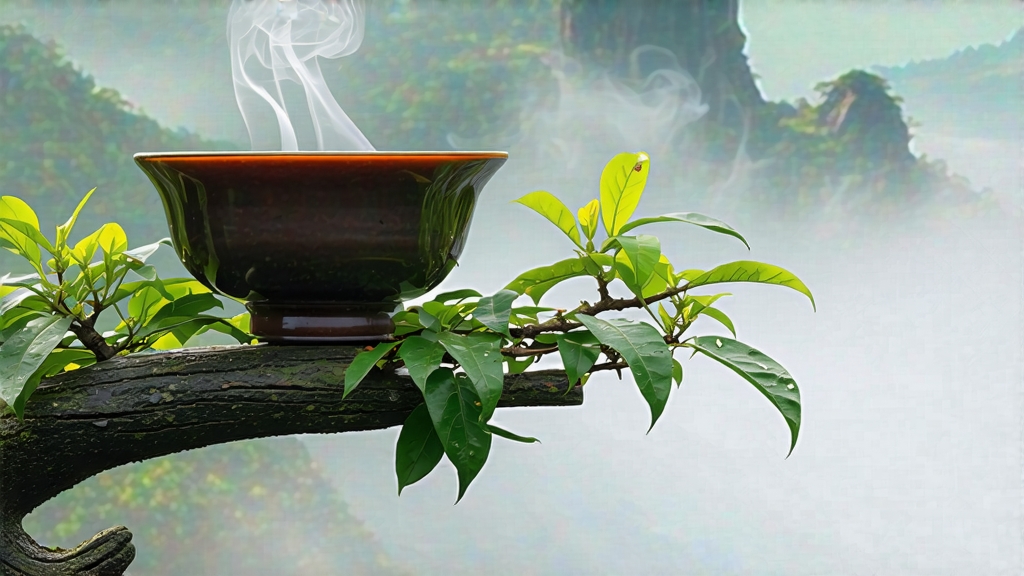
Tieguanyin, literally “Iron Goddess of Mercy,” is the most revered name within the vast oolong family. To many Chinese, the word itself evokes cool mornings in southern Fujian, where granite peaks wrap around terraced gardens and the air is thick with the scent of fresh leaves and mountain mist. Internationally, Tieguanyin is often reduced to a floral supermarket tea, yet in its birthplace of Anxi County it commands the same reverence that Burgundy commands in France. This article invites you to look beyond the label, tracing the cultivar’s 300-year legend, its five distinct styles, the meticulous craft that turns a green leaf into a curled emerald pearl, and the sensory ritual that transforms hot water into liquid orchid perfume.
-
Historical roots: from legend to landrace
Local monks recount the tale of Wei Yin, a devout farmer who daily cleaned a neglected iron statue of Guanyin, the Bodhisattva of Compassion. One night in 1725, the goddess appeared in a dream and guided him to a hidden shrub whose leaves shimmered like iron yet exuded floral fragrance. Wei transplanted the bush, propagated it, and named the tea in her honour. Whether myth or marketing, the story anchors Tieguanyin in spiritual gratitude, a mindset still echoed when modern farmers pour the first infusion onto the earth as an offering. By the late Qing, Anxi merchants had carried the cultivar across the Maritime Silk Road; empty crates stamped “Tieguanyin” have been found in 19th-century Jakarta and Calcutta warehouses, proof that the tea travelled faster than its written history. -
The plant: a landrace that refuses to stand still
Botanically, Tieguanyin is a clonal landrace (Camellia sinensis var. sinensis ‘Tieguanyin’) rather than a single inbred line. Centuries of selection have produced sub-strains—Hongxin (red-heart) and Lvxin (green-heart)—that differ in leaf thickness, anthocyanin content, and flowering time. Hongxin yields a deeper, peach-pit aroma while Lvxin leans toward fresh gardenia. Farmers further divide gardens by micro-zone: Xianghua (“flower”) plots on shaded northern slopes give delicate aromatics, while Shigao (“rocky”) plots on sunny ridges lend mineral heft reminiscent of Wuyi cliff teas. Thus, even before processing, terroir sketches the first lines of flavour. -
Five stylistic faces of one goddess
a) Qingxiang (light fragrance): the modern export favourite, 18-25 % oxidation, baked only once at 80 °C to lock in bright green colour and lilac top notes.
b) Nongxiang (thick fragrance): 30-40 % oxidation, medium charcoal bake (100 °C, three hours), creating honeyed orchid with a custard finish.
c) Chuanxiang (traditional fragrance): 50 % oxidation, three charcoal bakes over 60 days, using longan-wood embers; the cup is mahogany, the taste toasted brioche and dried apricot.
d) Chenxiang (aged fragrance): the same tea re-roasted every two years for at least five years; flavours evolve through prune, sandalwood, and finally camphor.
e) Shengcha (raw tea): unprocessed maocha stored in bamboo baskets for months, then finished to order—popular among boutique vendors who want to “customise” the roast level for clients. Each style is still labelled Tieguanyin, so asking “Which Tieguanyin?” is the first step toward an informed purchase. -
Craft: the choreography of green and fire
Harvest begins when the morning dew weighs one gramme per square centimetre of leaf—an old farmer’s trick that ensures turgor pressure is high yet surface water is low. Standard pluck is the “open-face” four-leaf set: apical bud plus three mature leaves, giving the polyphenol-to-amino ratio needed for partial oxidation. After solar withering for 30 minutes, trays are moved indoors for 90 minutes of “cooling sweat,” kick-starting enzymatic activity. The critical shaking step (yaoqing) follows: 200 g of leaves are placed in a 1.2 m bamboo drum rotating at 18 rpm for 3 minutes, then rested for 10 minutes; the cycle repeats five times. Edge bruising turns leaf rims reddish-brown while veins stay green, the visual signature of Tieguanyin.